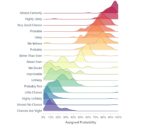
by tyler garrett | Jun 18, 2025 | Data Visual
Water sustains life, propels economies, and shapes the very fabric of civilizations. However, ensuring it’s consistently available—clean, safe, and abundant—requires strategic management built on solid data-driven insights. Hydrology data visualization tools empower decision-makers to navigate the complexities of water resource management with unmatched precision. As champions of data, analytics, and innovation, our consulting firm recognizes that visualizing hydrological information isn’t simply a convenience—it’s indispensable for identifying patterns, forecasting trends, informing policy, avoiding environmental catastrophes, and ensuring sustainable water usage for generations to come. Leveraging advanced visualization techniques, organizations can step beyond static numbers into a dynamic understanding that paves the way toward sustainable success. From streamlining workflows to anticipating water challenges, the right visualization tools can prove transformative. But which tools excel, how can they be implemented effectively, and what are the key considerations for organizations looking to gain actionable insights from hydrology data? Let’s explore further.
The Importance of Hydrology Data Visualization in Water Resource Management
Water resource management depends greatly on timely, accurate, and clearly presented data. The complexity of hydrological data requires visual representation to communicate insights effectively to stakeholders. Without visualization, large datasets risk becoming meaningless streams of numbers—difficult to interpret and actionable decisions elusive. Visualization solves this challenge, translating complex data into intuitive formats like horizon charts, heatmaps, scatterplots, and dashboards that stakeholders at any level can readily comprehend.
Visualization adds vital layers of meaning that raw data alone cannot reveal. It helps hydrologists pinpoint patterns, predict water shortages, and alert stakeholders to potential natural disasters like floods or droughts. By clearly communicating the statistical background and context, hydrology visualization tools go beyond basic data presentation, embedding critically needed statistical context into data visualizations to empower strategic decision-making.
Furthermore, transforming statistical data into visual forms increases accessibility and aligns various stakeholders around shared strategic goals. By adopting powerful visualization tools, organizations can involve nontechnical team members directly in critical planning and strategy discussions, ensuring better collaboration and improved resource allocation across the entire water management lifecycle. This proactive, visual strategy ultimately builds resilience into every aspect of water resource planning.
Selecting the Right Visualization Tools for Effective Hydrology Management
Choosing visualization tools involves understanding your organization’s specific hydrology data complexity, goals, and stakeholders’ technical proficiency. For instance, sophisticated tools like Tableau integrate seamlessly with powerful cloud platforms, such as Microsoft Azure, to deliver robust insights in real-time. Consulting experts in Azure consulting services can simplify the process, turning complex, aggregated water data from multiple sources into clear, visually appealing reports and dashboards optimized to your organization’s needs.
Furthermore, specialized visualization methods like violin plots can elegantly display data distribution, helping hydrologists quickly identify anomalies, deviations, and underlying distributions in water quality indicators or river flow volumes. A holistic understanding provided by such graphical representations enables stakeholders to make informed predictions and confidently develop crisis response strategies.
Visualization tools also ideally include built-in data governance features as outlined in our previous post on data governance for strategic decision-making. This ensures that businesses managing sensitive hydrological data can implement data governance compliance measures quickly and effectively—assuring data integrity, accountability, and regulatory compliance while maintaining high trust among stakeholders.
Data Analytics and Engineering for Advanced Hydrology Visualization
Behind compelling water management visualizations is rigorous data analytics and impeccable data engineering. To fully leverage data visualization tools, organizations must first build strong technical foundations through professional data engineering practices. Clean, properly formatted data sets avoid critical errors such as integer overflow—a technical but serious issue detailed in our exploration of why integer overflow kills analytics effectiveness. Solid engineering principles and thoughtful database design prevent misleading insights and ensure accurate representations that stakeholders can rely upon confidently.
Moreover, comprehensive tools facilitating easy adjustments to data models enable swift reaction during crises like floods. Tools such as SQL-based operations like UPDATE statements to modify existing data or the ALTER TABLE function to swiftly change table structures can quickly adapt datasets to evolving hydrological scenarios. Adaptable data visualization backed by agile analytics tools promotes a responsive strategy: a critical advantage in water resource management scenarios frequently impacted by rapidly changing environmental factors.
Organizations relying on robust analytics foundations are better positioned to extract the highest value from visualizing hydrological data. Moreover, they pay closer attention to issues such as regulatory reporting and lineage, enabling transparency and proper traceability throughout every step of analysis and reporting processes. Strategic use of analytics and data engineering surfaces hidden insights and delivers dynamic visuals to efficiently inform decision-makers.
Real-World Applications and Impacts of Visualizing Hydrology Data
Across multiple industries, visualizing hydrological data has showcased its strategic value. Municipalities employ these advanced analytics and visualizations to anticipate threats to drinking water, make strategic infrastructure investments, and protect residents from water shortages or flooding. In the agricultural sector, visualization helps farmers make critical irrigation scheduling decisions, thereby improving crop production and conservation efforts. Similarly, visualization actively enhances decision-making across various business sectors, as described in our article on analytics improving customer experiences.
Financially, businesses leveraging accurate visualizations prevent unnecessary expenditures and costly errors. Moreover, proper visualization promotes proactive decision-making and avoids typical problems often encountered in sectors such as finance, described in our post on risks from over-reliance on data. Real-world hydrology data visualization helps business managers understand the full financial and environmental impacts behind water resource projects, ensuring successful projects that meet regulatory compliance, stakeholder expectations, and long-term sustainability goals.
Furthermore, environmental oversight and strategic interventions rely heavily on clear visuals of complex hydrological data. Policymakers, nonprofits, and regulatory teams frequently turn insights derived from these visualizations directly into actionable policies, programs, and communication strategies that encourage stakeholders’ cooperation and improve environmental advocacy.
The Future of Water Management Through Innovation in Visualization
The integration of cutting-edge technologies like artificial intelligence (AI), Internet of Things (IoT) sensors, predictive modeling, and cloud computing suggests a promising future for visualization tools in hydrology. As technology progresses, new means of gathering data and analyzing it dynamically will lead to visualizations that are more precise, predictive, and effective than ever.
AI-driven visualization solutions can dramatically reduce time-to-insight, enabling experts to react quicker and with greater accuracy. Meanwhile, cloud integration ensures visualizations are always current, scalable, and universally accessible, creating a seamless data-driven decision-making environment. With more advanced visualization techniques entering mainstream hydrology, it’s becoming clearer that powerful innovation and strategic visualization tools are indispensably molding the future of sustainable water resource management.
The potential found in visual data isn’t mere innovation; rather, it’s becoming an absolute necessity. Organizations that embrace and master these powerful data visualization methods position themselves advantageously for whatever complexities future hydrological scenarios hold. They achieve better sustainability outcomes, efficient resource use, and ultimately build resilient systems that improve people’s lives.
Thank you for your support, follow DEV3LOPCOM, LLC on LinkedIn and YouTube.

by tyler garrett | Jun 18, 2025 | Data Visual
Visual analytics transform abstract radiation data into actionable insights, empowering nuclear facility leaders to confidently monitor and manage safety. Effective radiation data visualization is paramount—not just a luxury, but an essential measure. Accurately tracking radiation levels, promptly detecting anomalies, and delivering intuitive visual alerts can mean the difference between proactive control and a catastrophic incident. Consequently, modern nuclear facilities demand highly reliable, interactive, and scalable systems designed around advanced visualization techniques. With this comprehensive guide, we’ll explore how state-of-the-art data visualization can elevate nuclear facility monitoring, streamline operational procedures, promote rapid decision-making, and deliver measurable safety gains. Join us as we unveil the specialized tools and best practices redefining radiation data visualization systems, and how effectively leveraging strategic analytics consulting can empower your nuclear facility to operate with unmatched precision and safety.
The Critical Importance of Real-time Radiation Data Visualization
In nuclear facility monitoring, obtaining prompt insights into rapidly fluctuating radiation levels is crucial. Unexpected increases in radiation represent both operational risks and potential health hazards. Facilities must visualize real-time data effectively to anticipate, recognize, and proactively respond to anomalies before they escalate.
Modern visualization technology provides facilities enhanced capabilities for real-time monitoring with comprehensible formats such as dashboards, geo-mapping analytics, and hierarchical data representations. Interactive visualizations let operators rapidly identify critical events and anticipate future issues based on patterns within historical data and predictive analytics.
A well-designed visualization system goes beyond merely displaying data—it delivers dynamically rendered visual alerts triggered by predefined radiation thresholds. Leveraging dataset sampling techniques for processing optimization, your real-time visualization ensures both performance efficiency and accuracy—giving decision-makers the insights they need exactly at the right moment.
When radiation insights must be accurate to the second, turning numerical complexity into clear visual context becomes invaluable—enabling rapid decision responses to maintain operational safety standards.
Optimized Data Pipelines: Ensuring Reliability and Efficiency
Radiation monitoring systems accumulate immensely large data volumes, requiring optimized data pipelines that guarantee reliability and potential degradation tolerance in hazardous environments. Harnessing resilient pipeline design with graceful degradation strategies empowers nuclear facilities with robust data processing and analytical confidence—even in scenarios where partial disruptions to infrastructure occur.
Unlike traditional approaches which rely heavily on rigid, costly data infrastructure, embracing innovative methods such as transitioning from expensive drag-and-drop data warehousing to open source Node.js allows nuclear facilities to maintain reliable analytics, cost-effective scalability, flexible architecture adjustments, and easier ongoing management.
Furthermore, utilizing advanced ingestion methods can enhance pipeline efficiency. Incorporating updates using available integrations, nuclear facilities may send XML data to Google BigQuery using Node.js, enabling immediate availability of radiation data for visualization and analysis. Optimizing pipeline management ensures quick delivery of relevant, up-to-date insights critical for promptly addressing radiation safety and compliance concerns.
Choosing the Right Visualization Techniques for Nuclear Safety Data
Selecting effective visualization techniques tailored to the context of radiation monitoring is key to actionable insights. Recognizing when and how to use specific visual methods gives technicians and decision-makers clear context and helps prevent misinterpretation. Leveraging expert Power BI consulting services provides your team deep knowledge on applying industry-leading visualization practices tailored to nuclear radiation tracking needs.
Radiation data is often complex and hierarchical. Employing specialized visuals such as Voronoi treemaps allows facilities to clearly depict hierarchical breakdowns of critical metrics across multiple reactors and localized units. This approach simplifies understanding complex relationships and provides immediate drill-down capabilities.
For representing geographic radiation intensities, heat maps and geographic visualization clearly display radiation hotspots, enabling immediate awareness and precise, geo-targeted decision-making. Additionally, ensuring that visualization choices adhere to established data visualization best practices helps prevent erroneous interpretations that could negatively impact rapid and confident decision-making.
Matching the right visualization techniques to the data context and stakeholder needs empowers nuclear facilities with exceptionally clear data-driven insight, significantly mitigating operational risk.
Enhancing Data Visualization with Advanced Analytics and Streaming Windows
Nuclear facilities demanding ultra-accurate and responsive analytics require innovative approaches integrated into visualization frameworks. Real-time radiation visualization systems benefit substantially from advanced processing window strategies for streaming analytics, as these enable rapid detection of anomalies and predictive responses based on continually updating data streams.
These strategies leverage smart data processing intervals, setting optimal parameters that minimize latency between event detection and visual update. In nuclear monitoring, this means identifying critical radiation risks immediately to mitigate potential incidents more efficiently and confidently.
Incorporating machine learning algorithms and predictive modeling further enhances visual alerts by proactively recognizing trends or anomalies. By embedding predictive analytics within real-time dashboards, facility operators can respond before conditions worsen, maintaining higher standards of safety and asset protection.
Advanced analytics efforts should always be guided by well-defined data contract-driven development techniques, promoting team alignment around radiation data and ensuring consistency, integrity, and reliability at each visualization and analytics step.
Promoting Visualization Accessibility in High-Stakes Environments
Nuclear facility operators frequently encounter intense pressure and urgency when responding to radiation-related anomalies. Radiation data visualization systems, therefore, must be immediately accessible and intuitive specifically during high-pressure scenarios. Prioritizing visualization accessibility guidelines and implementation ensures effective and equitable engagement across teams operating under varying stress levels and contexts.
Accessibility-focused design includes considerations such as simplified language for data labels, intuitive color schemes that clearly indicate radiation thresholds, and visualizations designed for effortless comprehension at a glance. As a result, facilities can foster intuitive user interaction regardless of diverse experience or stress conditions.
Ensuring alignment and consistency in how users gain access to data visualizations also helps streamline internal workflows. An effective self-service data access request workflow implementation promotes transparency, reduces delays, and accommodates facility teams’ immediate needs, ultimately enhancing nuclear safety operations and compliance.
Next-Generation Visualization Systems in Nuclear Safety: Strategic Advantages
The exponential growth in analytical technology and visualization techniques provides unprecedented opportunities for nuclear facilities committed to operational safety excellence. Embracing well-designed, robust, and accessible radiation data visualization systems offers strategic advantages—not limited to compliance assurance but extending into operational efficiency, safety mitigation, and continuous predictive maintenance insights.
A strategic move towards advanced analytics-driven visualization systems positions nuclear facilities at the forefront of industry standards and delivers data-driven insights that position them ahead of potential radiation hazards. With increased situational awareness resulting from clear, intuitive data presentations, operators gain the agility to proactively address radiation threats swiftly and confidently.
Choosing to pursue state-of-the-art radiation visualization systems supported by dedicated analytics consulting and expert implementation ensures nuclear facilities mitigate risk, operate more predictably, and continuously evolve toward safer, smarter operational methodologies.
Equip your team today: take advantage of powerful insights through exceptional data visualization systems that empower superior nuclear safety management.
Thank you for your support, follow DEV3LOPCOM, LLC on LinkedIn and YouTube.

by tyler garrett | Jun 18, 2025 | Data Visual
In the era of unprecedented data generation, organizations that capture, understand, and quickly act on customer feedback gain a strategic advantage. Today’s customers interact with businesses through numerous digital touchpoints, from social media to customer service emails, each touchpoint generating insights ripe for visualization. Real-time Voice of Customer (VoC) feedback dashboards combine advanced analytics, robust enterprise-scale data management, and state-of-the-art visualization techniques to empower decision-makers with timely and actionable insights. These dashboards not only enhance customer experiences and satisfaction, but fortify brand longevity and market agility. In this blog post, we will explore how real-time feedback visualization goes beyond traditional reporting, leveraging cutting-edge technologies and agile design approaches to turn raw feedback into powerful strategic decision-making tools.
The Significance of Real-Time Voice of Customer Dashboards
Gone are the days when monthly spreadsheets or quarterly reports were sufficient methods for understanding customer sentiments. We’re witnessing a paradigm shift: real-time Voice of Customer dashboards offer businesses the proactive capabilities to detect emerging customer trends or issues the moment they arise. Leveraging technologies like Natural Language Processing (NLP) and sentiment analysis, organizations now process qualitative and quantitative data streams seamlessly and almost instantly.
Real-time dashboards present decision-makers with live updates on customer feedback collected from reviews, social media channels, surveys, chat interactions, and more. This continuous stream of actionable information helps trained customer service teams identify and address customer pain points rapidly, and product teams can proactively adapt their offerings to suit shifting market preferences. By shortening the feedback loop between customer sentiment and action taken, companies foster stronger customer relationships, increased loyalty, and ultimately higher revenues.
Additionally, instantaneous feedback visualization helps marketing teams to identify resonating messages and campaigns swiftly. Resources aren’t wasted on ineffective strategies; rather marketing efforts can dynamically align with real customer motivations. The fundamental takeaway is clear—the closer an organization moves toward real-time customer feedback visibility, the greater its capacity for responsive strategic decisions.
How Visualization Enhances Customer Feedback Interpretation
Data alone, without effective visualization, frequently appears overwhelming rather than informative. The magic behind robust VoC dashboards lies within intuitive visualization methods, transforming complex datasets into digestible, visually appealing, and insightful information. Techniques include sentiment analysis visualizations, heat maps, trend line charts, journey mapping, and comparative dimensional analyses—all allowing leaders an immediate comprehension of customer narratives in real-time.
For instance, sentiment analysis visualizations, which frequently leverage machine learning libraries like the Natural Language Toolkit (NLTK), showcase consumer emotions either positive, negative, or neutral with easy-to-interpret symbols or graphic elements. Highly visual summaries of customer trends can prioritize urgent issues or rapidly highlight opportunities. Heat maps can efficiently illustrate highly-concentrated clusters of customer feedback about particular features or services, allowing organizations to pinpoint hot zones of attention immediately.
Furthermore, predictive analytics visualizations layered onto dashboards enable business leaders to foresee potential challenges proactively. By analyzing the velocity and pattern of feedback sentiment over time, predictive insights notify decision-makers to upcoming concerns or emerging consumer preferences. Such advanced visualization strategies, when implemented strategically, grant enterprises exceptional predictive and responsive capabilities, becoming crucial to the determination of market footholds.
Architecting Effective Real-Time Dashboards
Creating robust, meaningful, real-time VoC dashboards requires meticulous planning, technology expertise, and flexible backend architecture. Organizations typically leverage multiple technologies—including databases, streamlined generic pipeline templates, APIs, cloud computing, and visualization software—to maintain dashboard performance.
Real-time feedback ingestion demands well-designed data pipelines, often built on scalable cloud platforms to reduce latency. Utilizing modern tools such as API gateways and serverless functions further optimizes the ingestion and processing mechanisms. Additionally, a strategic polyglot persistence architecture—where organizations implement diverse database types optimized to handle varying data formats and latencies—can significantly enhance dashboard responsiveness and ensure data fidelity.
Also critical to the effectiveness of VoC analytics workflows is the design of your analytics backend. Having a high-performance backend, like Microsoft SQL Server solutions or similar enterprise-scale databases, guarantees efficient handling of real-time data streams while providing enterprise-class reliability, security, and scalability. With backend architecture optimized, dashboards become quick-loading, authoritative, and effective decision-support tools.
Importance of Human-in-the-Loop in VoC Dashboards
While technology is foundational to real-time feedback dashboards, the role humans play in interpreting and leveraging the insights remains indispensable. The combination of automation with a thoughtful application of human-in-the-loop data pipeline processes establishes the perfect synergy vital for agile responsiveness to changing market conditions.
Human-in-the-loop involves data analysts and user-experience experts who provide context, validate insights, and iteratively fine-tune methods. The continuous engagement of skilled analysts bridge gaps where pure automation might misinterpret nuance or overlook subtle shifts in customer perceptions. Human judgment is especially crucial to maintaining high accuracy levels, ensuring the actionable insights offered through dashboard visualizations remain trustworthy and relevant.
Moreover, involving people within analytics processes ensures transparency and enhances collaboration across organizational units. Aligning feedback with strategic objectives, experienced analysts contextualize complex data—converting them from abstract numbers into strategic business narratives. Thus, organizations can successfully integrate advanced analytics directly into decision-making processes arising from real-time VoC dashboards.
Establishing Strong Data Governance to Support Real-Time Analytics
Data governance not only increases data quality and consistency, but it also lays a robust foundation for successful real-time analytics. Businesses that aspire to flourish with real-time VoC dashboards require clearly defined data stewardship roles, policies, and frameworks—for instance, practicing comprehensive frameworks like federated data governance implementations across business units. Such a unified yet flexible approach ensures rapid, accurate response times and proper control mechanisms over sensitive customer data.
Instituting strong governance models clarifies data responsibilities and accelerates decision-making processes. Establishing robust governance removes barriers to efficient real-time analytics deployment. Defined governance helps: delineate clear roles, streamline reporting protocols, manage secure access, and provide transparent definitions of data assets—ultimately enhancing confidence in dashboard results across the enterprise.
The critical partnership between data governance teams, application developers, and business stakeholders results in trusted insights and reliable decision-making agility. Properly implemented governance ensures strategic data alignment, protects organizational reputation, and assures compliance. By embedding good governance into the analytics culture, businesses sustainably achieve and maintain competitive differentiation through trustworthy data-driven insights.
The Future of VoC Visualization
Real-time Voice of Customer visualization dashboards represent only the beginning of an accelerating journey towards more advanced, predictive, and immersive customer intelligence analytics. The increasing integration of technologies like artificial intelligence, deep learning, augmented analytics, and immersive data storytelling methods offer incredibly rich potential for further evolution within this exciting field.
Future dashboards might incorporate virtual or augmented reality interfaces, allowing leaders to conceptually immerse themselves directly into customer journeys, understanding issues and experience gaps on a near-personal level. Advances in streaming data solutions and progressively sophisticated NLP methodologies promise even finer-grained sentiment detection, categorized emotional nuance, and dynamic content interaction.
As dashboards advance, organizations must stay committed to continual innovation, flexible architecture, governance maturity, and agile analytics processes to maintain competitive advantages. By fully embracing a strategically designed, technology-driven roadmap toward advanced visualization, organizations can securely place customer perspectives on center stage—driving innovations tailored directly by consumer voices and continually outperforming market expectations.
Harnessing Customer Voices Effectively
Today’s most successful businesses have prioritized customer voices as their ultimate guide. Real-time feedback visualization dashboards bring clarity, immediacy, and invaluable insights—empowering leaders at every level of the organization. By prioritizing data governance, strategic human involvement, dynamic architecture planning, and innovative visualization strategies, your business can harness real-time VoC dashboards to achieve sustainable market success.
Ready to elevate your organization’s decision-making capabilities through data innovation and analytics? Partnering with experts like our team ensures your organization unlocks the full potential of powerful real-time data-driven outcomes—transforming your Voice of Customer initiatives from aspiration to reality.
Thank you for your support, follow DEV3LOPCOM, LLC on LinkedIn and YouTube.

by tyler garrett | Jun 18, 2025 | Data Visual
Imagine captaining your cruise line forward with remarkable precision—leveraging deep insights into passenger experience to transform every voyage into a tailored journey of delight. The cruising business sails smoothly only when operators seamlessly anticipate and respond to what passengers desire, expect, and ultimately enjoy. In this unparalleled age of data-driven decision making, sophisticated analytics coupled with clear visualizations empower cruise executives to identify opportunities, automate responses, optimize experiences, and highly personalize journeys. Gone are the eras of guessing at passenger preferences; take the helm confidently with powerful analytics at your fingertips. A robust visualization strategy not only charts a clear course through data complexity—it paves the path outright toward delighted passengers and increased profitability. Let’s explore the profound impact of cruise industry analytics in passenger experience visualization and how innovators harness cutting-edge technology to gain competitive advantage in this dynamic marketplace.
Harnessing Real-Time Data Streams to Respond to Passenger Needs Instantly
The cruise industry’s operational complexity and high passenger volume generate massive quantities of data at every turn—from onboard activities, food and beverage preferences, shore excursions, and social interactions. Leveraging analytics, such extensive data pipelines, can now stream in real-time, enabling instantaneous responsiveness to enhance passenger experience. Visualizing data within rapid dashboards provides cruise lines and stakeholders critical insights—all accessible at a glance.
A real-time dashboard provides granular intelligence for decision-makers. Repeated issues can be shortened immensely by using streaming technologies to alert operators immediately when quality standards diminish or passenger satisfaction drops. Implementing real-time analytics solutions, such as dashboards built with Streamlit and Kafka, ensure all onboard departments—from dining to entertainment—stay attuned and adapt dynamically. This elevates passenger satisfaction exponentially, showcasing readiness for next-generation data operations.
Further, strategic analytics enable data canary deployments, ensuring quality even in production environments. Cruise line operators can learn more through strategically employing data pipeline canary deployments for testing in production, solidifying operational resilience and robustness.
The Power of Personalization through Feature Store Architecture
The varied tastes and expectations of cruise passengers make personalization a critical secret to elevating passenger experience. Cruise operators collect vast, diverse data from each interaction, but how do they seamlessly leverage machine learning (ML) to drive personalization at scale? These industry leaders have increasingly implemented sophisticated feature store architectures for ML Operations, bridging the gap between raw data and intelligent analytics.
Feature stores aid cruising companies in standardizing, cataloging, and rapidly deploying data features across machine learning models. Leveraging rich historical passenger behavior data helps operators create targeted offers, customize onboard engagements, and maintain responsiveness to predicted passenger preferences. Integrating such analytics into intuitive visualizations makes decisions seamless, intuitive—and most importantly—actionable.
Smart feature store architecture supports timely and consistent analytics-driven personalization. Cruise line decision makers see clearly visualized experiences in dashboards, enabling proactive adjustments that quickly adapt journeys to customer expectations on-the-go. With personalized customer offers, notifications, and recommendations continuously improving, cruise operators set the course for optimized passenger outcomes.
Achieving Data Optimization Through Efficient Dataset Sampling Techniques
Navigating a significant volume of data can quickly become overwhelming for cruise industry stakeholders. To make analytics meaningful and manageable, operators must employ smart dataset sampling techniques aimed at optimization. Sampling techniques serve to streamline analytics without compromising accuracy or meaningfulness, ensuring quick visualization and response.
Using optimized dataset sampling, cruise industry stakeholders can rapidly visualize and interpret customer behaviors and emerging preferences for operational efficiency. Analytics empowered by smart sampling strategies simplifies data accessibility and reduces complexity, allowing management teams to make confident decisions.
This scalable approach speeds up analytical processes, creating broad and clear visualizations from diverse data sets. With optimized sampling methodologies, operators quickly grasp emerging trends, passenger satisfaction issues, or logistical pain points before broader patterns interrupt operations or impact travelers negatively—creating smoother sailing and elevated experiences.
Innovative Visualization through Edge Computing Analytics
As analytics tools advance, they enable visualization not just at centralized data warehouses, but directly at the point data originates. Utilizing edge computing visualization and rendering analytics at the data source, cruise operators can reduce lag, save bandwidth, and enhance real-time passenger experience responses enormously.
With ships sailing across oceans, latency in communication affects onboard decisions significantly. With analytics deployed on cruise ships via advanced edge technologies, operators easily see visualizations of passenger usage patterns, popular amenities, or operational bottlenecks directly onboard. These near-instant rendering visualizations empower immediate actionable insights, significantly enhancing onboard passenger experience.
The edge computing visualization approach also benefits remote management by allowing fleet-wide consistency. Analyzing insights directly at each data generation point results in accurate and timely feedback, enabling clear comparisons between operational areas or regions visibly represented. Thus, operators witness precisely how strategic actions impact passenger experience instantly, everywhere.
Transitioning to Cost-Effective Data Visualizations with Open Source Node.js
In the fast-evolving technology landscape, cruise industry decision-makers must identify cost-efficient yet impactful tools to achieve powerful analytics solutions. The shift from traditional drag-and-drop proprietary platforms towards open-source visualization solutions, especially powered by efficient node.js frameworks, enables cruise lines to achieve unmatched flexibility and cost-effectiveness, as detailed in this insightful piece on leveraging Node.js for data warehousing.
Open-source Node.js platforms empower cruise data teams to build highly customizable visual analytics solutions, rapidly translating customer datasets into actionable insights. Node.js visualization tools streamline operations and offer unrivaled customization for detailed insights tailored to cruising industry specifics—the flexibility modern executives require.
Adopting open-source technology allows cruise businesses to innovate rapidly and economically. With quick implementation, iterative improvements, and competitive advantages provided by modern visual analytic capabilities, cruise lines significantly elevate operational dashboards and bolster passenger-centric intelligence and improvements.
Building Trustworthy Analytics through Golden Record Management
Cruise industry stakeholders recognize the need to rely on trustworthy, high-quality analytics to shape the passenger journey. Often handling data incoming from multiple sources—bookings offices, onboard point-of-sale systems, mobile apps, and social review platforms—finding accord and accuracy can challenge even the most proficient operators. Implementing robust methods of golden record management in multi-source environments becomes essential to maintaining data integrity and reliability.
Golden records bring clarity and accuracy to customer experience visualizations, ensuring data-driven decisions align with reality. Cruise line decision-makers can trust visualized passenger experiences precisely match onboard activity, preferences, and pain points. These reliable analytics help operators eliminate redundancies, personalize journeys effectively, and validate operational strategies.
By refining passenger data into a single version of truth via consistent golden record management, cruise line stakeholders obtain reliable visual analytics fostering decisive, impactful actions. The result? Continued passenger trust, positive reputation management, and rapidly-contained customer experience issues within each voyage.
Set Sail With Smarter Data Analytics Today
Innovative cruise line executives must continually leverage sophisticated analytics and compelling visualizations to keep customers sailing happily and profitably. By effectively utilizing data engineering, analytics strategies, and visualization tools outlined above, companies position themselves far ahead in maritime passenger travel innovation. Your differentiation begins with improved data literacy and citizen-driven analytics implementation (explored here). Harness these strategies to elevate passenger experience, meet customer expectations proactively, and seize opportunities—distinguishing yourself clearly in a sea of competitors.
Thank you for your support, follow DEV3LOPCOM, LLC on LinkedIn and YouTube.

by tyler garrett | Jun 18, 2025 | Data Visual
In today’s hyper-competitive agricultural landscape, accurate crop yield prediction is no longer optional—it’s a strategic necessity. Advanced commodity analytics and visualization have emerged as vital technological allies allowing agribusinesses to proactively manage risk, optimize harvest decisions, and leverage unprecedented insights. From satellite imagery to ground-sensor analytics and visualization platforms, predictive analytics transform raw data into actionable intelligence. Farms and agricultural businesses harnessing these cutting-edge technologies position themselves at the forefront of innovation and sustainability. Ready to delve deeper into the strategic power of commodity analytics applied through crop yield prediction visualizations? Let’s unpack together exactly how data analytics, visualization, and innovative technologies can redefine how agricultural commodities are managed, bought, and sold.
The Strategic Value of Crop Yield Prediction Analytics
Harnessing the full potential of agricultural commodities hinges heavily on precise crop yield predictions. Traditionally, agricultural stakeholders relied on experience, historical averages, and intuition, but the modern digital age demands more rigorous, data-driven methodologies. A robust crop analytics framework not only mitigates market volatility risk but also enhances operational efficiency. Predictive analytics now leverages myriad data sources—satellite imagery, weather forecasts, historical harvest data, and real-time sensor feedback—to yield predictive models of exceptional accuracy.
This comprehensive data-centric approach—described in detail in our article about big data technologies—provides both large-scale agribusinesses and smaller farms with indispensable insights that drive productivity growth. For instance, predictive models inform farming decisions on resource allocation, influencing crop management techniques ranging from planting and irrigation schedules to fertilizer and pesticide use. The net result is minimized waste, increased yield stability, and ultimately, higher profitability for stakeholders in the agri-market.
At its heart, the predictive model relies heavily on advanced databases, capable of handling diverse and high-volume data influxes. We recommend considering robust database infrastructure, such as PostgreSQL, to help efficiently manage these datasets. Our consultants specialize in optimizing database systems tailored specifically for predictive analytics workloads. Explore more about our expertise in this domain by reviewing our comprehensive PostgreSQL consulting services.
Visualization Tools: Bridging the Gap Between Data and Decision-Making
The sheer volume and complexity of agricultural data present significant challenges for stakeholders attempting to draw meaningful insights. Visualization solutions bridge this critical gap, transforming overwhelming datasets into insightful visualizations instantly comprehensible by decision-makers. Effective crop yield visualizations quickly communicate trends, risks, and forecasts, empowering even non-technical management teams to interpret complex analytics intuitively. Visualization dashboards dynamically combine variables like weather patterns, soil moisture levels, satellite imagery, and historical yield results into interactive visual formats, fueling strategic decision-making.
Visualization technology today increasingly incorporates geo-spatial mapping of farmlands integrated seamlessly with real-time predictive charts, heat maps, and scenario modeling capabilities. The immediate visibility of diverse predictive insights enables quicker, stronger business decisions impacting logistical planning, inventory management, and market pricing strategies. The future-ready organization leveraging interactive analytics visualizations demonstrates an inherently modern data-centric corporate culture. To ensure your team fully embraces visualization analytics insights, consider implementing a structured data citizenship program that boosts technological adoption and literacy across roles.
Further, visualization adoption is as much mindset as it is about technology. Our recommended article on cultivating a data-driven mindset underscores how embracing visualization tools goes hand in hand with embracing a broader data-driven organizational culture. Ultimately, visualizations unleash analytics’ strategic potential, significantly shortening time-to-insights and ensuring stakeholders confidently navigate complex agricultural commodity landscapes.
Advanced Data Pipelines for Enhanced Crop Yield Analysis
Behind effective crop yield visualizations lies a robust data enrichment pipeline—a complex architecture designed to cleanse, transform, and synthesize diverse data streams into usable analytical insights. Advanced crop prediction necessitates extensive data engineering to ensure accuracy, timeliness, and relevance of model inputs. This data engineering involves ingestion of raw sensory data, satellite image analysis, weather station inputs, crop field inspection reports, and historical yield records. Once aggregated, data is systematically transformed through data cleansing and enrichment processes to ensure high-fidelity analytics.
Well-designed data pipelines are essential for automated, scalable analytics capabilities that stay efficient as data volume and complexity grow exponentially. An agile pipeline architecture utilizing streamlined ETL (Extract, Transform, Load) techniques allows agricultural companies to integrate and leverage both structured and unstructured data effectively. The detailed perspective offered in our article discussing various data enrichment pipeline architecture patterns will help you understand these critical operational strategies more deeply.
Leveraging semantic versioning practices further enables maintaining consistency across evolving predictive analytics systems. Integrating data schema changes and APIs with semantic versioning—as explained comprehensively in our published guide on semantic versioning for data schemas and APIs—ensures teams can navigate rapid model updates and enhancements reliably, supporting continuous improvement of crop prediction accuracy. This powerful combination of advanced data pipeline architecture and semantic data management is reshaping today’s agricultural data analytics landscape decisively.
Harnessing Analytics to Support Sustainable Agriculture
Cultivating sustainable agriculture remains an imperative global challenge. Fortunately, integrating high-level analytics frameworks directly supports sustainability objectives by increasing agricultural efficiency, reducing waste, and maximizing yield—all essential elements of sustainable farming practices. Predictive visualization analytics enable agribusinesses to use resources strategically, dramatically cutting inputs like water, fertilizer, and energy consumption without sacrificing yield.
Furthermore, prescriptive analytics enable practitioners to project different sustainability scenarios—informing strategic decisions that promote long-term environmental responsibility. Our deep-dive piece on types of data analytics offers additional clarity about how prescriptive analytics capabilities empower stakeholders to understand and operationalize sustainability initiatives effectively. This proactive use of analytics helps businesses to safeguard their profitability, consumer credibility, and competitiveness amidst increasingly stringent environmental expectations.
In fact, strategic data analytics contributed significantly to addressing civic challenges, such as explored comprehensively in our case study analyzing data analytics’ role in addressing Austin’s affordability crisis. Similarly, applying sophisticated predictive analytics to agriculture aids in overcoming critical sustainability challenges, offering a future win-win scenario: environmental stewardship coupled with robust business growth and profitability.
The Technological Future of Commodity Analytics
The future of commodity analytics promises continued evolution propelled by artificial intelligence, big data, machine learning advancements, and sophisticated visualization tools. Progressive agribusinesses strategically investing now in scalable analytic ecosystems will significantly outperform enterprises reliant on legacy methodologies. Already we’ve glimpsed into technologies such as IoT-connected farm management systems, automated drones performing crop inspection, and cloud-computing-enabled predictive analytics that continuously refine models through machine learning algorithms, driving extreme levels of predictive accuracy.
A sound technological strategy, including embracing modern analytics architectures and visualization technologies, ensures the scalability and adaptability required to incorporate tomorrow’s innovations seamlessly. Enterprises refusing to remain static—those continuously evolving their analytics infrastructure—will ultimately lead the market by quickly adopting emerging technologies and predictive methodologies.
As you strategize integrating commodity analytics and visualization, aligning with industry-leading analytics expertise enables rapid evolution and sustainable innovation. Our talented team of data specialists stand ready to help agricultural businesses unlock unparalleled strategic advantage through data analytics solutions—ensuring continuous competitive supremacy within rapidly evolving agricultural ecosystems.
Let’s collaboratively cultivate healthier, bolder decisions rooted firmly within world-class, predictive crop yield analytics.
Thank you for your support, follow DEV3LOPCOM, LLC on LinkedIn and YouTube.

by tyler garrett | Jun 18, 2025 | Data Visual
Mergers and acquisitions (M&A) continue to reshape markets and redefine competitive dynamics. However, the grim reality is that up to two-thirds of all mergers fail to meet their original objectives due to insufficient due diligence and unclear visibility of data-rich insights. Crafting strategic success hinges upon the robust analysis of technical and operational compatibility between merging entities. Visual analytics tools equipped for deep, intuitive exploration of due diligence data are no longer optional—they are vital for modern corporate decisions. Forward-thinking organizations are increasingly turning toward sophisticated visualization platforms to bring clarity, gain holistic insights, and minimize risks in their M&A process. At our software consulting practice, we have seen first-hand the competitive advantage companies gain through effective data-driven visualization methods, and in this article, we will delve into the critical role visualization tools play within due diligence analytics and share actionable strategies for utilizing these technologies to ensure comprehensive, accurate, and valuable merger evaluations.
The Importance of Data Visualization in Merger Due Diligence
Corporate mergers and acquisitions (M&A) represent strategic upheavals that aim for economies of scale, new market entrances, or capturing synergistic advantages. Yet, many companies overlook a crucial preparatory step: structured, intuitive visual representation of underlying data. Data visualization tools become essential in mergers because raw numerical analysis, textual documentation, or traditional financial statements alone fail to reveal hidden opportunities or stealth risks lurking beneath complex corporate operations. Visualization platforms empower executives and analysts alike to quickly discern performance trends, pinpoint operational redundancies, and compare cultural and technological compatibility at a deep level. Rapid visualization techniques help decision-makers stay proactive rather than reactive when aligning new organizations.
Additionally, sophisticated due diligence visual analytics simplify how executives interpret financial data, operational KPIs, customer portfolios, and personnel alignment—all critical indicators aiding valuation and negotiation strategies. Platforms like Tableau, Power BI, and custom-built Node.js-based visualization dashboards offer intuitive, visually-driven analytics that shorten the distance between raw data and invaluable insight. Organizations can quickly detect overlaps, recognize performance gaps, and visualize integration scenarios, paving the road toward data-backed integration execution. For instance, our client implementations utilizing Node.js consulting services have demonstrated the power of custom visualization apps, dramatically enhancing due diligence efficiency and meaningfully reducing guesswork in high-stakes M&A decisions.
Redefining Due Diligence with Advanced Data Engineering Practices
The integration of new visualization technologies starts with sound foundational data engineering practices. Without robust data engineering support, visualization layers risk displaying inaccurate or inconsistent trends, leading to flawed merger decision-making. Best-practice data pipelines must facilitate real-time and batch integration processes, reliably pulling transactional, operational, and financial data from disparate systems into unified analytical environments. Common pitfalls include inconsistent data quality processes or redundant integration methods, creating confusion and undermining trust in analytic outputs. To avoid these issues, it’s important to recognize and circumvent common mistakes; explore our comprehensive guide discussing the common data engineering anti-patterns before you embark on complex visualization project integrations.
Successful M&A visual analytics demand careful attention to harmonizing data across multiple corporate structures, utilizing reusable solution frameworks and standardized approach templates wherever possible. This significantly reduces implementation timelines, lessens ambiguity, and ensures accuracy of presented information. At our consulting firm, we frequently recommend employing a robust data integration pattern library to streamline and simplify the analysis pipeline construction. Doing so accelerates data availability, improving responsiveness during the crucial initial merger analysis phases, and fosters a forward-looking, proactive approach in identifying and managing integration risks.
Leveraging APIs for Enhanced Due Diligence Visibility and Speed
To outperform your competitors in the merger race, your due diligence analytics must be quick, agile, and scalable. Leveraging Application Programming Interfaces (APIs) provides a foundational component to this agility, enabling integration of relevant, real-time evaluation data directly into visualization dashboards. Investing in quick, efficient API consulting engagements to set up customized and scalable integration strategies has become instrumental. In fact, our clients consistently see dramatic improvements in analytic responsiveness after establishing proper API infrastructures. Learn more about the strategic value in efficient API engagements through our resource on driving rapid API value.
APIs allow visualization layers to perform real-time queries against diverse company datasets such as financial transactions, HR records, operations data, and digital analytics. This on-demand access to real-time improvement and predictive modeling significantly strengthens executive insights throughout the due diligence process. It ensures accurate modeling of integration scenarios, avoids costly information bottlenecks, and bolsters your data-driven strategy. Furthermore, well-designed APIs offer users the ability to integrate external data sources, providing a holistic picture unmatched by less connected visualization solutions. This flexibility allows organizations to quickly deploy dynamic and actionable dashboards that lead to superior strategic decisions and measurable success during M&A integration planning.
Ensuring Data Security and Privacy Compliance in Mergers
As powerful visualization tools empower deeper scrutiny of merging entities, organizations must perform analytics responsibly. During mergers and acquisitions, maintaining high standards of data privacy and compliance measures is indispensable. In visual analytics, handling sensitive customer, employee, or business partner data comes with additional responsibilities in compliance. Therefore, ensuring your visualization solutions comply with privacy laws and consent management systems is paramount to safeguard trust and prevent fines or liabilities. Understandably, companies undergoing mergers must diligently manage privacy challenges and balance competing interests around data transparency and confidentiality.
We advocate for proactive data privacy management leveraging consent-driven practices. Reviewing our resource on balancing data collection and user privacy with consent management systems provides actionable guidance for securely navigating the complexity of data privacy regulations during strategic mergers. Additionally, establishing clear deprecation policies for legacy data assets allows merging companies to rationalize redundant or outdated information, responsibly and securely eliminating unneeded datasets. Protecting sensitive data ensures your data visualization tools not only drive improved insights but do so within a secure and compliant analytical framework, increasing confidence and trust in the due diligence evaluation process.
The Evolving Role of Data Scientists in Merger Analytics
M&A analytics visualization represents far more than improved visuals—it’s a potent tool for robust strategic decision-making. Critical to wielding these deeper analytics capabilities effectively is the evolving role of data scientists within the organization. Today, data scientists are instrumental not merely in quantitative analysis but as strategic partners who facilitate intelligent decisions through predictive modeling, AI-driven forecasting, and advanced integration scenario planning. Empowered by intuitive visualization platforms, data scientists increasingly become crucial interlocutors between business stakeholders and technical implementation teams.
To fully capitalize on this transformative role, organizations must provide data science teams with robust, easy-to-use analytics software, including tools such as Tableau. Data scientists should be knowledgeable in implementing and optimizing visual analytics infrastructure and understand foundational practices such as how to install Tableau Desktop effectively for enterprise environments and developing models using SQL techniques like INSERT INTO statements. For further growth and understanding the trajectory of this important career, explore our insights on how the role of data scientists is evolving as they become more strategically indispensable in modern M&A analytics.
Crafting Successful Merger Integration Through Strategic Analytics
Visual analytics tools revolutionize the corporate merger evaluation and due diligence process, expediting clear and informed decision-making. Companies using sophisticated visualization platforms combined with solid analytics practices dramatically mitigate risks associated with mergers, enhancing integration plans and facilitating strategic clarity. Visualization-driven due diligence is now an industry best practice; clarity in data representation has become instrumental in assessing compatibility, driving synergy, and unlocking real strategic value from corporate mergers.
Our software consulting and analytics firm is continually innovating in this space, helping clients deploy thoughtful visualization strategies tailored to their merger scenarios. By investing deeply in this capability, organizations position themselves for profitable, stable, and growth-oriented mergers, giving themselves a potent advantage in an increasingly data-driven global economy.
Thank you for your support, follow DEV3LOPCOM, LLC on LinkedIn and YouTube.
























